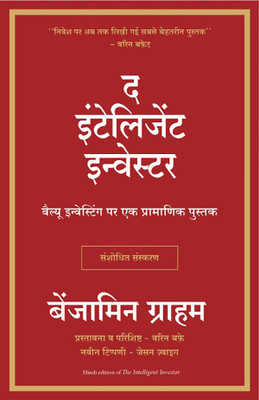
Introduction to Electrodynamics (English, Paperback, Griffiths David J.)
Introduction to Electrodynamics (English, Paperback, Griffiths David J.)
- Language: English
- Binding: Paperback
- Publisher: Prentice-Hall of India Pvt.Ltd
- Genre: Science
- ISBN: 9788120316010, 9788120316010
- Pages: 599
- Cash on Delivery available?
Introduction To Electrodynamics is a concise book that covers all the basic and necessary principles of electromagnetic theory. This revised 3rd edition with a compact structure of chapters, examples, problems and solutions is highly recommended as a textbook for undergraduate physics students.
Summary Of The Book
A branch of theoretical physics, Electrodynamics is a study of interactions between currents and electric charges. Although it uses the extension of Newtonian mechanics, it is a successful and complete theory in itself. While the classical Newtonian model is good enough for everyday physics, it is not as effective for the study of objects which are very far, extremely small and move at high speeds. After Classical Electrodynamics emerged as a branch to address this, it later evolved to become a unified field during the 19th century. It is one of the basic and most relevant subjects to be taught at undergraduate and graduate physics classes.
This textbook covers a wide array of topics including Vector Analysis, Electrostatics, Magneto-statics, Radiation and Relativistic Electrodynamics. Griffiths' unique style of informal explanation and the way he has kept things elementary and clear, make Introduction To Electrodynamics one of the widely prescribed texts for the introductory undergraduate year. Through simple explanations and ample examples, the book also intends to make difficult topics seem interesting and fun to learn. The author dedicates an entire chapter to Vector Analysis, which is a very key concept in understanding the basics of electrodynamics. The following 7 chapters focus on other fundamental principles with the same objective approach.
The third edition comes with a lot of changes so as to improve clarity of the subject. The first 8 chapters make up excellent course material for one semester. The rest of the contents, which cover Conservation Laws, Potentials and Fields and many other such topics, can be comfortably taught during the second semester. All chapters include relevant and practical examples to relate to.
In addition to the problems and solutions at the end of each chapter, there are also plenty of problems for learners to solve while understanding the topics. This is in view of aiding higher rates of retention.
About David J. Griffiths
David J. Griffiths is a noted physicist and educator from the United States of America.
His other books include Revolutions in Twentieth-Century Physics, Introduction to Elementary Particles and Introduction to Quantum Mechanics.
After graduating from The Putney School, Griffiths completed his B.A., M.A. and Ph.D., all at Harvard University. He had Sidney Coleman as his doctoral advisor during his Ph.D. to supervise his thesis. He had spent 31 years of his career at Reed College before retiring as the Howard Vollum Professor of Science. In 1997, Griffiths was awarded the prestigious Robert A. Millikan award for his outstanding scholarly contribution in the field of physics education.
| Title |
|
| Imprint |
|
| Edition Type |
|
| Product Form |
|
| Latest Version |
|
| Publisher |
|
| Genre |
|
| Source Type |
|
| ISBN13 |
|
| Book Category |
|
| BISAC Subject Heading |
|
| Book Subcategory |
|
| ISBN10 |
|
| Language |
|
| University |
|
| Specialization |
|
| Term |
|
- 5★
- 4★
- 3★
- 2★
- 1★
- 763
- 202
- 81
- 31
- 62
Awesome self-study book !!
This book is great for self-study in electromagnetism. However, a moderate amount of mathematical preparation is required (more than grade 12).
The book is written somewhat like a lecture and will remind readers of the style of The Feynman Lectures series. All topics are lucidly explained and the emphasis is placed on the understanding on concepts rather than a mathematically rigorous treatment of electromagnetism.
The book is ...
Varun Gandhi
Certified Buyer
Mar, 2012
good book for students
Perfect for UG courses.
Topics are in a sequential way.
Approach by the author makes it easy for the reader to follow.
As usual got it delivered in 2 days in perfect condition,
thanks to flipkart..
Pardha saradhi
Certified Buyer
Feb, 2012
Simply awesome
Very good content
Ashutosh Sharma
Certified Buyer, Gwalior
Apr, 2021
Excellent Piece
I think the quality of this book will enhance if more SOLVED promblems were Given.
Niraj%20 Sawala
Certified Buyer
Apr, 2012
Excellent
Highly recommended.!
Meenakshi Rajagopal
Feb, 2012
Nice
2. Language and signs of mathematics terms little different.
3. Binding of book is not good as it can be torn out
easily.
4. Overall if you want to read it for a semester , then go for it.
Flipkart Customer
Certified Buyer, Dhanbad
Oct, 2021
Perfect product!
Flipkart Customer
Certified Buyer, Sangareddy
Sep, 2022
Real Electrodynamics
vijay pandey
Oct, 2013
Good Book for Undergraduate Study
Piyush Rai
Certified Buyer, Patiala
Apr, 2012
Conceptual And Easy To Understand
The book can be used for undergraduate courses for the subject of electromagnetics.
Piyush Kuhikar
Certified Buyer
Jun, 2012







